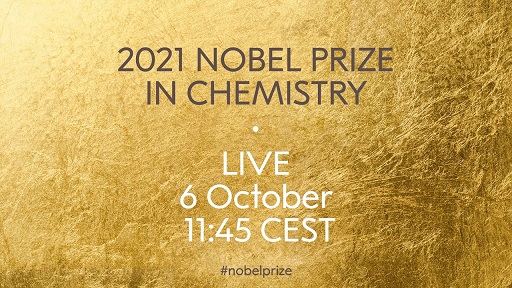Today the Nobel Prize Committee will announce the chemistry prize winners.
These significant advancements could win the Nobel Prize in Chemistry.
Sequencing genomes faster and more cheaply
The scientists: Shankar Balasubramanian and David Klenerman, University of Cambridge
The DNA of living organisms contains troves of information about how these organisms evolved, the functions of the genes within them, and whether they have a genetic disease. But the extent to which researchers can use this information depends on whether they can access it efficiently. Twenty years ago, it took a decade and cost a billion dollars to sequence a single human genome. The 2021 Nobel Prize in chemistry might acknowledge the scientists whose innovations made it possible to complete the process in a day for about $1,000. That accelerated process makes new applications of the technology possible, including diagnosing and treating cancer and other diseases, as well as sequencing the RNA from COVID-19 to track the spread of variants around the world.
DNA consists of two intertwined chains of sugars and phosphates with a nucleotide base attached to each sugar. There are four possible bases — adenine, thymine, cytosine and guanine — and each base is attached to one on the other chain — adenine with thymine, and cytosine with guanine. To sequence DNA, scientists need to determine the order in which these base pairs appear. Part of what makes this difficult to do is that each gene contains anywhere from tens of thousands to several million base pairs, and the entire human genome contains 3.2 billion.
Balasubramanian and Klenerman, two chemists, devised a technology for quickly analyzing billions of fragments of DNA at the same time. Their work won them the 2020 Millennium Technology Prize. Three of the prize’s nine past winners have later won Nobel Prizes.
Conducting chemistry in living organisms
The scientist: Carolyn Bertozzi, Stanford University
Carolyn Bertozzi, a chemist, is known for inventing ways to chemically modify molecules in living organisms or cells without damaging them. Bertozzi has named these reactions “bioorthogonal chemistry,” or chemistry that doesn’t interact with biology. These reactions can help researchers identify drug targets and label cells for imaging. And they might win her the 2021 Nobel Prize in chemistry.
Before bioorthogonal chemistry, scientists knew very little about the sugar molecules that coat our cells. Bertozzi has used bioorthogonal chemistry to study these sugars, and scientists now know that the sugar coatings shape proteins, guide white blood cells, aid cell signaling and perform other vital tasks. They also determine your blood type. Bertozzi captured the first images of these sugars (on zebrafish).
A particular type of sugar, called sialic acid, is more prominent on cancer cells than normal cells, and for a long time, scientists weren’t sure why. Bertozzi discovered that these sugars hide the cancer cells from immune cells. Immune cells detect and destroy cancer cells, but when they come across a cancer cell coated with sialic acid, the message they receive is “these are not the cells you’re looking for.” Bertozzi’s research team found a way to remove sialic acid, which could enable the immune system to identify the cancer cells. Her work has also led to ways to test for tuberculosis, attach drugs to antibodies to fight tumors and diagnose and treat other diseases.
Free radicals, antioxidants and human health
The scientist: Barry Halliwell, National University of Singapore
Our bodies need a balance of free radicals, which are oxygen-containing molecules that react easily with other molecules, and the antioxidants that react with them. Fifty years ago, the scientific consensus was that free radicals were bad and antioxidants were good. Halliwell, a biochemist, is credited with spearheading the effort to better understand free radicals and antioxidants, showing that these molecules and their relationship with organisms is more complex.
We naturally produce free radicals and antioxidants, but they also are introduced by external sources. Free radicals enter our bodies when we breathe in pollution and cigarette smoke or absorb sunlight. Antioxidants are found in fruits, vegetables and nuts.
Free radicals are necessary for survival, serving a range of functions from destroying pathogens and tumors to controlling blood flow and neural activity. But because free radicals have an unpaired electron, they also steal electrons from cells in our bodies, causing damage that is thought to lead to a wide range of diseases. Antioxidants can lend electrons to free radicals, neutralizing them so they no longer react with cells.
Halliwell’s research has helped identify exactly what sorts of damage free radicals cause, and how free radicals and antioxidants are connected to brain diseases, including Alzheimer’s and dementia. He has also studied which antioxidants in the human diet are most important, why antioxidant supplements appear to be largely ineffective, and the development of new antioxidants.
Nine Nobel Prize Predictions for 2021 | Inside Science
